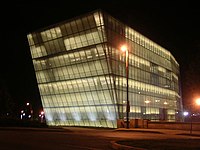Related Research Articles

Francis Scott Key was an American lawyer, author, and amateur poet from Frederick, Maryland, who is best known for writing the lyrics for the American national anthem "The Star-Spangled Banner".

"The Star-Spangled Banner" is the national anthem of the United States. The lyrics come from the "Defence of Fort M'Henry", a poem written on September 14, 1814, by 35-year-old lawyer and amateur poet Francis Scott Key after witnessing the bombardment of Fort McHenry by British ships of the Royal Navy in Outer Baltimore Harbor in the Patapsco River during the Battle of Baltimore in the War of 1812. Key was inspired by the large U.S. flag, with 15 stars and 15 stripes, known as the Star-Spangled Banner, flying triumphantly above the fort during the U.S. victory.

Fort McHenry is a historical American coastal pentagonal bastion fort on Locust Point, now a neighborhood of Baltimore, Maryland. It is best known for its role in the War of 1812, when it successfully defended Baltimore Harbor from an attack by the British navy from the Chesapeake Bay on September 13–14, 1814. It was first built in 1798 and was used continuously by the U.S. armed forces through World War I and by the Coast Guard in World War II. It was designated a national park in 1925, and in 1939 was redesignated a "National Monument and Historic Shrine".
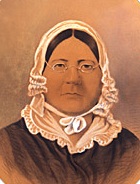
Mary Pickersgill was the maker of the Star Spangled Banner Flag hoisted over Fort McHenry during the Battle of Baltimore in the War of 1812. The daughter of another noted flag maker, Rebecca Young, Pickersgill learned her craft from her mother, and, in 1813, was commissioned by Major George Armistead to make a flag for Baltimore's Fort McHenry that was so large that the British would have no difficulty seeing it from a great distance. The flag was installed in August 1813, and, a year later, during the Battle of Baltimore, Francis Scott Key could see the flag while negotiating a prisoner exchange aboard a British vessel, and was inspired to pen the words that became the United States National Anthem in 1931.
Defenders Day is a longtime legal holiday on September 12, in the U.S. state of Maryland, in the City of Baltimore and surrounding Baltimore County. It commemorates the successful defense of the city of Baltimore on September 12-13-14, 1814 from an invading British force during the War of 1812, an event which led to the writing of the words of a poem, which when set to music a few days later, became known as "The Star-Spangled Banner", which in 1931 was designated as the national anthem of the United States.
The music of Baltimore, the largest city in Maryland, can be documented as far back as 1784, and the city has become a regional center for Western classical music and jazz. Early Baltimore was home to popular opera and musical theatre, and an important part of the music of Maryland, while the city also hosted several major music publishing firms until well into the 19th century, when Baltimore also saw the rise of native musical instrument manufacturing, specifically pianos and woodwind instruments. African American music existed in Baltimore during the colonial era, and the city was home to vibrant black musical life by the 1860s. Baltimore's African American heritage to the start of the 20th century included ragtime and gospel music. By the end of that century, Baltimore jazz had become a well-recognized scene among jazz fans, and produced a number of local performers to gain national reputations. The city was a major stop on the African American East Coast touring circuit, and it remains a popular regional draw for live performances. Baltimore has produced a wide range of modern rock, punk and metal bands and several indie labels catering to a variety of audiences.
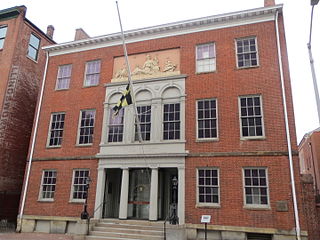
The Peale, located in Baltimore, Maryland, is Baltimore's Community Museum. Its mission is to evolve the role of museums in society by providing local creators and storytellers with the space and support they need to realize a complete and accessible cultural legacy for the city of Baltimore. The Peale occupies the first building in the Western Hemisphere to be designed and built specifically as a museum. The museum was imagined by American artist and inventor Rembrandt Peale (1778–1860) and designed by architect Robert Cary Long, Sr. Peale's original museum closed in 1829. Shortly after the closing, the City of Baltimore bought the building for use as the City Hall (1830-1875). Following construction of the present City Hall, the Peale Museum building became the Male and Female Colored School Number 1 (1878-1887), which marked the beginning of public secondary education for African-Americans in Baltimore. The Bureau of Water Supply occupied it next (1887-1916). The building was then turned into rental space for shops and factories (1916-1928). Threatened with demolition after years of neglect, the original structure was rebuilt, restored, and renovated from 1930-31, becoming the Municipal Museum of the City of Baltimore, a museum of paintings and natural history. The renovation of the building was supervised by John Henry Scarff (1887-1964), a Baltimore-born architect, painter, and archaeologist, who later worked closely on policies governing looted art and damaged monuments during and after World War II. The building was designated a National Historic Landmark in 1965. It was eventually merged with other historic sites, houses, and museums in the early 1980s under the expansive efforts of a new executive director, with the name of the Baltimore City Life Museums B.C.L.M. and a broader mission in conjunction with the other historical locations/sites/structures in Baltimore.
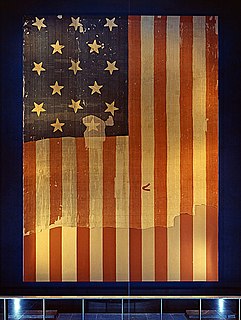
The Star-Spangled Banner, or the Great Garrison Flag, was the garrison flag that flew over Fort McHenry in Baltimore Harbor during the naval portion of the Battle of Baltimore during the War of 1812. It is on exhibit at the National Museum of American History, Smithsonian Institution. Seeing the flag flying over Fort McHenry on the morning of September 14, 1814, after the battle ended, Francis Scott Key was inspired to write the poem "Defence of Fort M'Henry". These words were written by Key and set to the tune of "To Anacreon in Heaven" by John Stafford Smith, a popular song at the time. In 1931 the song became the national anthem of the United States.
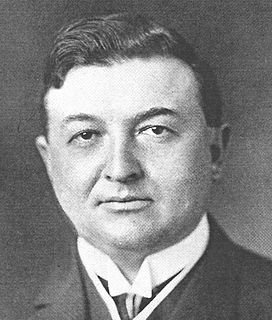
John Adolph Emil Eberson was a Ukrainian American architect best known for the development and promotion of movie palace designs in the atmospheric theatre style. He designed over 500 theatres in his lifetime, earning the nickname "Opera House John". His most notable surviving theatres in the United States include the Tampa Theatre (1926), Palace Theatre (1928), Majestic Theatre (1929) and Paramount Theatre (1929). Remaining international examples in the atmospheric style include both the Capitol Theatre (1928) and State Theatre (1929) in Sydney, Australia, The Forum and Le Grand Rex.

John Thompson Ford was an American theater manager and politician during the nineteenth century. He is most notable for operating Ford's Theatre at the time of the Abraham Lincoln assassination.

Mary Euphemia "Effie" Germon was an American stage actress of the late 19th century from Augusta, Georgia, a descendant of the Germons of Baltimore who were an old theatrical family. She excelled as a soubrette.
Ford's Grand Opera House was a major music venue in Baltimore, Maryland, located on West Fayette Street between North Howard and Eutaw Streets. It was founded by theatre manager John T. Ford and designed by architect James J. Gifford. The opera house/theatre opened to the public on October 2, 1871, with a show that included readings from Shakespeare's "As You Like It" as well as vocal and orchestral performances. Then owned by 1950s–60s era theatre magnate Morris A. Mechanic, it closed almost 93 years later with its last Broadway show from New York City, "Something Funny Happened on the Way to the Forum" in 1964. It was replaced three years later as the prime site for Baltimore live theatre patrons with the opening in the landmark of the new downtown redevelopment project of Charles Center, the starkly modernistic "Brutalist" architecture of the Morris A. Mechanic Theatre at the southwest corner of Charles and Baltimore Streets, four blocks to the east.

Baltimore City Hall is the official seat of government of the City of Baltimore, in the State of Maryland. The City Hall houses the offices of the Mayor and those of the City Council of Baltimore. The building also hosts the city Comptroller, some various city departments, agencies and boards/commissions along with the historic chambers of the Baltimore City Council. Situated on a city block bounded by East Lexington Street on the north, Guilford Avenue on the west, East Fayette Street on the south and North Holliday Street with City Hall Plaza and the War Memorial Plaza to the east, the six-story structure was designed by the then 22-year-old new architect, George Aloysius Frederick (1842–1924) in the Second Empire style, a Baroque revival, with prominent Mansard roofs with richly-framed dormers, and two floors of a repeating Serlian window motif over an urbanely rusticated basement.
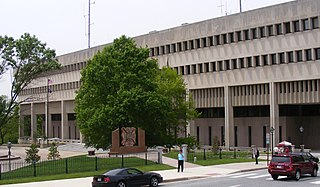
The Baltimore County Courthouses are located in Towson, the county seat. The older, original Baltimore County Courthouse of 1854-1856 houses many of the offices of the County government, including both the executive branch and the legislative branch. The County Courts Building lies to the west, separated by a plaza. Built in 1970-1971, it houses the civil, criminal, family and juvenile divisions of the Circuit Court of Maryland for Baltimore County, as well as the Baltimore County Sheriff's Office. The latter office protects the Courthouse and its judicial personnel, as well as having countywide law enforcement functions.
The Baltimore City Heritage Walk is a heritage trail that links 20 historic sites and museums in downtown Baltimore, Maryland.

War Memorial Plaza is a public square, small park and space in Downtown Baltimore between City Hall and the War Memorial Building, between Holliday Street on the west, East Fayette Street on the south, North Gay Street on the east, and East Lexington Street on the north.

The Morris A. Mechanic Theatre was a playhouse at 1 South Charles Street that was part of the Charles Center of Baltimore, Maryland. The theatre was built by and named for owner Morris A. Mechanic who operated a number of theatres in the city such as the Stanton, Fords Grand Opera House, The Centre, The Century/Valencia Theatres, all of which have since been demolished except for the Centre which the exterior has been restored and the interior has been repurposed as classroom and studio space for Maryland Institute College Of Art and Johns Hopkins University film programs. The Mechanic theatre was demolished in 2014.
The Chestnut Street Theatre in Philadelphia, Pennsylvania was the first theater in the United States built by entrepreneurs solely as a venue for paying audiences.
Brown's Brewery was a brewery located on East Lombard Street in Baltimore, Maryland. In 1813, Mary Pickersgill sewed the famous Star Spangled Banner Flag in one of its malthouses. At the time, the brewery was owned by Baltimore merchant George I. Brown who had bought it from Edward Johnson, the third Mayor of Baltimore. George Brown sold the brewery to Eli Claggett in 1818, and until its final closure in 1879, it was known as Claggett's Brewery. The site once occupied by the brewery was excavated in 1983 as the Baltimore Center for Urban Archeology's first project.
References
- 1 2 Beirne, Francis F. (1951). The Amiable Baltimoreans. New York: E.P. Dutton & Co., Inc. ISBN 0-8018-2513-X.
- ↑ "Writing National Anthems Was Just a Side Job". Baltimore Literary Heritage Project. Retrieved 30 August 2012.
- ↑ "Baltimore County Legacy Web". Baltimore County Public Library. Retrieved 30 August 2012.
Coordinates: 39°17′27.25″N76°36′36″W / 39.2909028°N 76.61000°W
